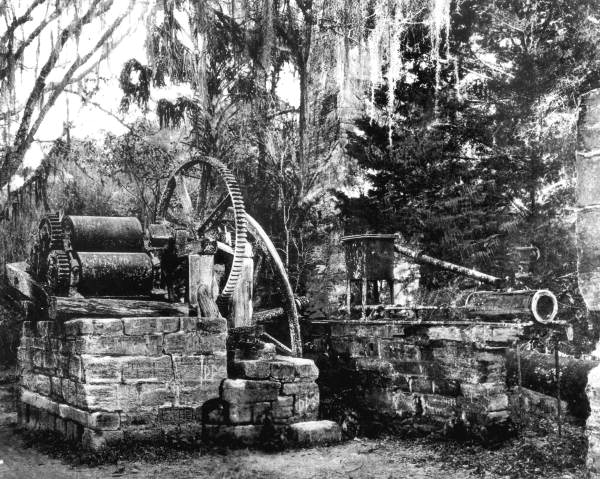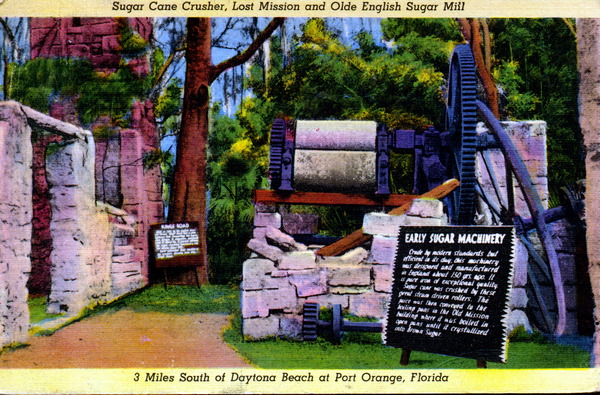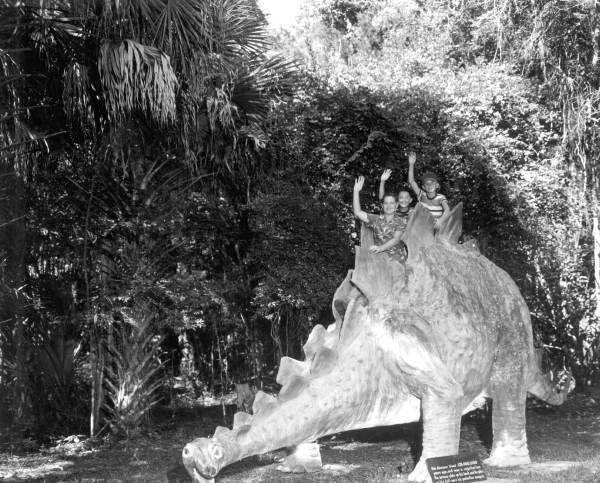Description of previous item
Description of next item
Dunlawton Sugar Plantation
Published December 12, 2014 by Florida Memory
Have you ever looked at a Florida landmark and thought about all the things it could tell you if it could speak? Some, admittedly, might have been far enough out of the way that they would have very little to say. Others, like the ruins of the Dunlawton Sugar Plantation near Port Orange in Volusia County, might be a little more chatty.
The Dunlawton Sugar Plantation and its mill have been around since the final years of Spain’s ownership of Florida. Local historians identify the mill’s original owner as Patrick Dean, who may have received the land as part of a grant from the Spanish Crown. Dean reputedly died during an Indian attack, whereupon his land passed to his sister Cecily, wife of local planter John Bunch. The Bunch family had also obtained land from the Spanish, and were prominent citizens in the area.
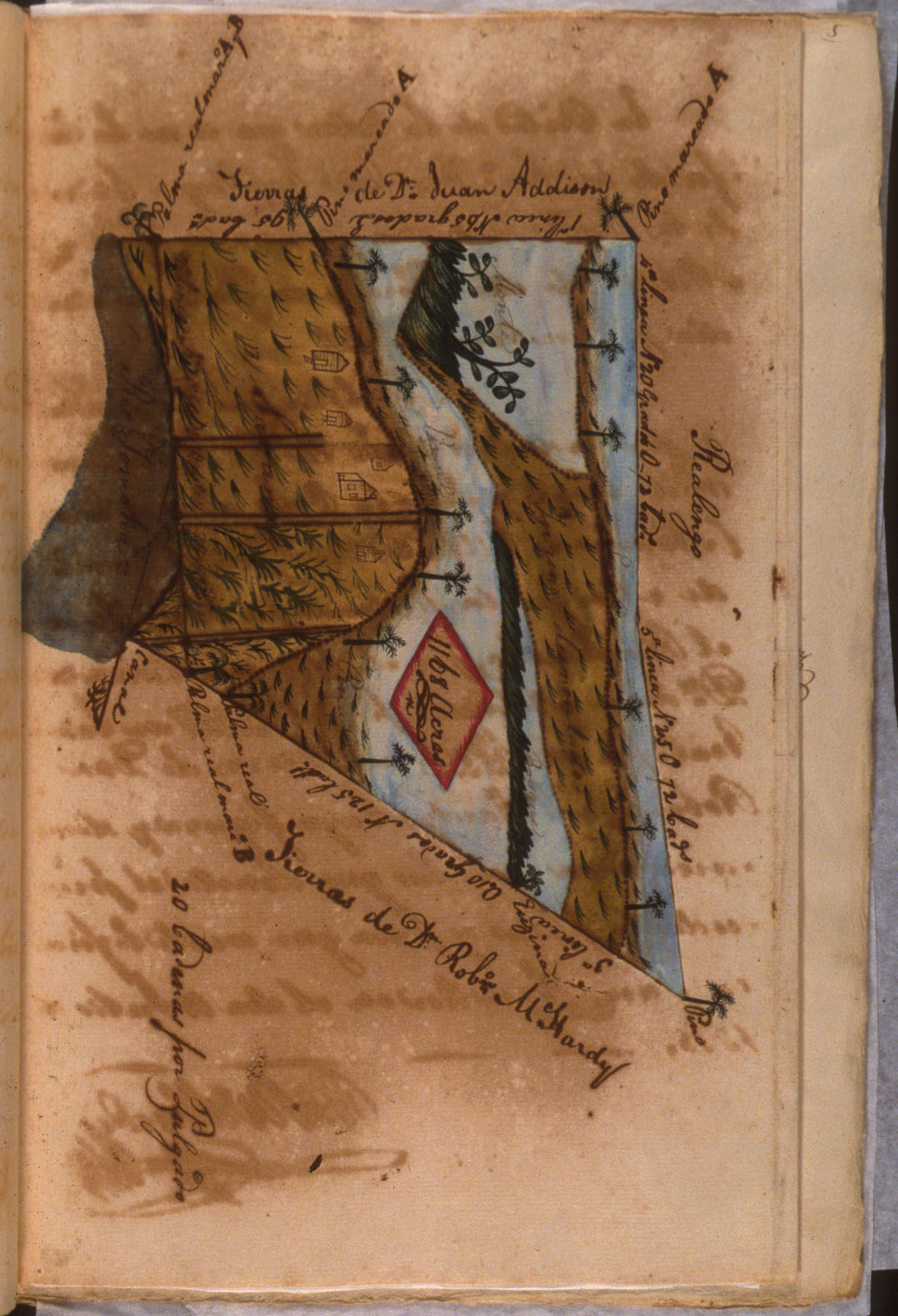
A map from the Spanish Land Grant documents of John Bunch, who acquired the Dunlawton mill and plantation after the death of its original owner (1818).
The land changed hands twice more, eventually entering the possession of Charles Lawton of South Carolina. Lawton named the plantation and mill “Dunlawton,” combining his mother’s maiden name with his own name. Lawton sold the property in 1832 to the Anderson family, who were operating the mill at the start of the Second Seminole War in 1835.
The mill was the scene of an early battle between the Florida militia and the Seminoles in January 1836. Major Benjamin Putnam of the Florida Volunteers led two militia companies to Dunlawton to recapture supplies that had been taken by Seminole raiders. The soldiers happened upon a couple of Seminoles, fired, and soon after found themselves under attack. During the course of the battle, about 120 Seminoles and escaped African-American slaves were involved. The militiamen had been young and inexperienced, and likely underestimated the strength of their adversaries. As Seminole War historian John K. Mahon explains, the Dunlawton skirmish “wakened many volunteers to the fact that they were playing with death.”
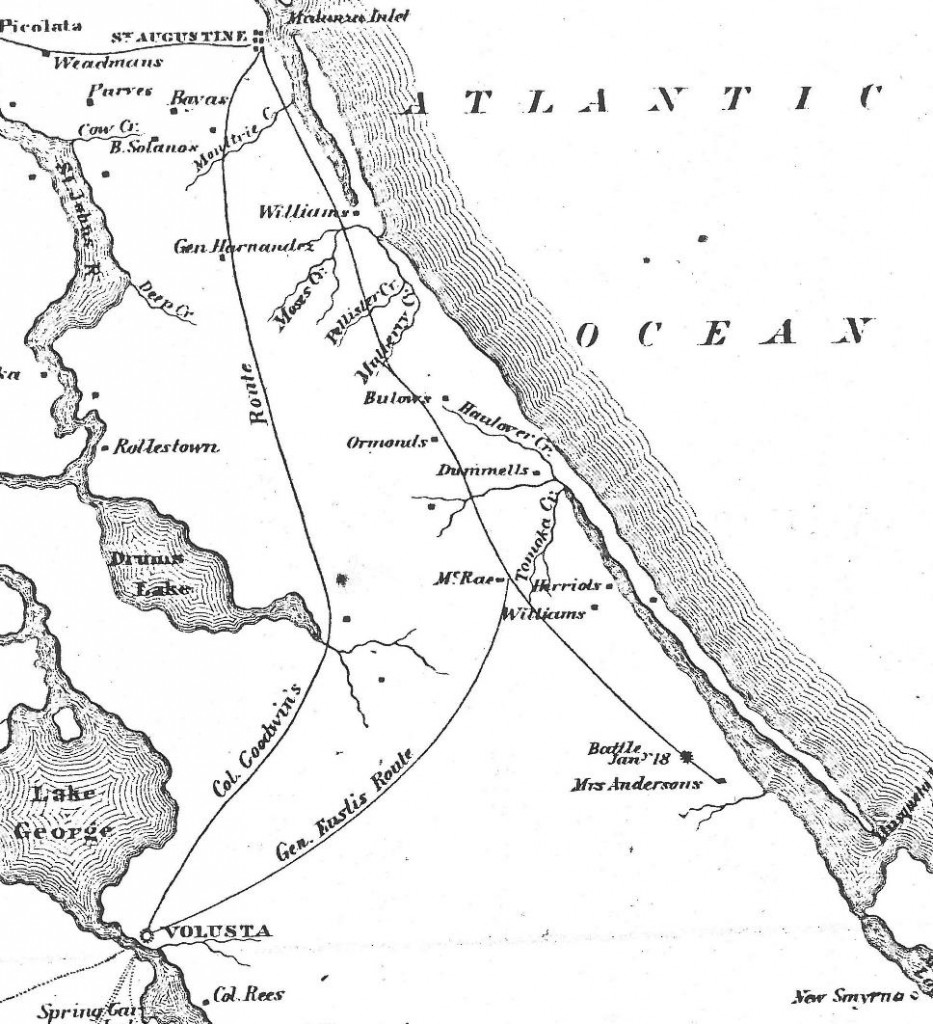
Excerpt of an 1836 map showing areas affected by the Second Seminole War. The Battle of Dunlawton is indicated with the note “Battle Jany 18.”
The mill was partially destroyed, but it was rebuilt after the war by a John J. Marshall. The property changed hands several times in the ensuing years, and was used for varying purposes. During the Civil War, several of the kettles used for boiling cane juice were re-purposed by the Confederates for saltmaking. The buildings on the property also sheltered Confederate patrols when the weather became rough.
The Dunlawton property changed hands several more times before being purchased by J. Saxton Lloyd, who had the grounds landscaped and turned into a historic park. He retained the ruins of the sugar processing equipment and surrounded them with flowering shrubbery and other plants.
Dunlawton had one more major transition in its future. In 1952, J. Saxton Lloyd leased the Dunlawton Sugar Mill Gardens to Dr. Perry Sperber, who envisioned a whole new attraction to draw visitors to the property. He built a train that would carry tourists through the gardens past a series of life-size statues of dinosaurs and other prehistoric creatures. Sperber called the renovated park “Bongoland.” The dinosaurs were popular both as scenery and for photo opportunities!
J. Saxton Lloyd donated the mill ruins and the Dunlawton property to Volusia County in 1963. Since 1988, the gardens have been open to the public and maintained by a non-profit organization called the Botanical Gardens of Volusia, Inc.
Is there a building in your Florida community that has witnessed a lot of historic changes? Tell us about it by sharing this article on Facebook or Twitter. Also, search the Florida Photographic Collection to see if we have photos of it on Florida Memory!
Cite This Article
Chicago Manual of Style
(17th Edition)Florida Memory. "Dunlawton Sugar Plantation." Floridiana, 2014. https://www.floridamemory.com/items/show/295241.
MLA
(9th Edition)Florida Memory. "Dunlawton Sugar Plantation." Floridiana, 2014, https://www.floridamemory.com/items/show/295241. Accessed December 20, 2025.
APA
(7th Edition)Florida Memory. (2014, December 12). Dunlawton Sugar Plantation. Floridiana. Retrieved from https://www.floridamemory.com/items/show/295241

 Listen: The Assorted Selections Program
Listen: The Assorted Selections Program